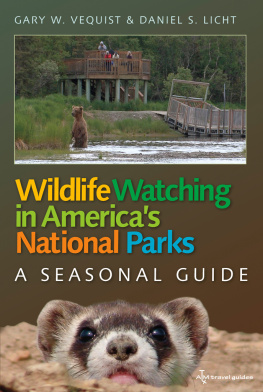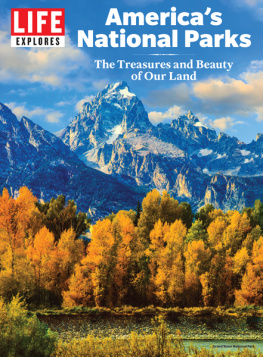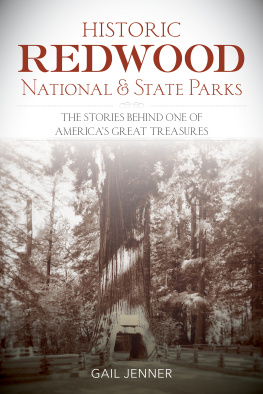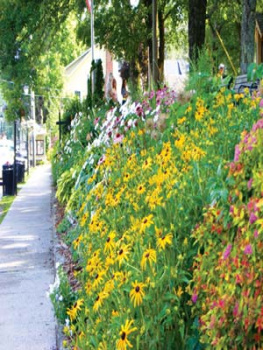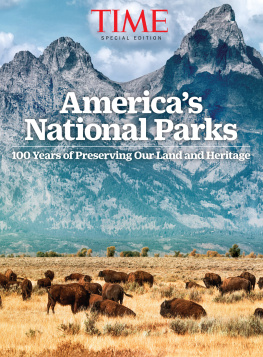I truly hope you have enjoyed our journey together across a wide swath of the United States, stopping along the way to visit thirty of our national parks, national historical parks, and national monuments. These places resonate with the history of the First Peoples of Turtle Island, the first inhabitants of the place we now call the United States.
These are places of beauty, of history, of genius, and of imagination. They are, as Angeline Mitchell called them (as I cited her in the entry on Tonto National Monument ), places created: by people... who had known joy and grief, pleasure and pain same as our race of today knows them, and who had laughed, cried, sung, danced, married & died, mourned or rejoiced their lives away. And, as the Affiliated Pueblo Committee so mindfully phrased it regarding Bandelier National Monument , but it applies to every single one of the places celebrated in this guide: Spiritually, our ancestors still live here at Bandelier. You see reminders of their presence heretheir homes, their kivas, and their petroglyphs. As you walk in their footsteps, value the earth beneath you and show everything the same respect we do when we re-visit this sacred place. Value and respect. Those are the watchwords of this book. Thank you for reading.
Ken Feder

A word of clarification: Of course, the names we today assign different Native groups or cultures are based on variables that might make sense to archaeologists in the presentthe particulars of pottery styles, shapes of spear points or arrowheads, distinctive architectural patterns, or regional food preferencesbut theres no real way of knowing whether the people themselves would have viewed those differences as significant or essential. Would they have perceived something alien or foreign about the styles, patterns, or preferences of their neighbors? Would they have viewed the degree of difference sufficient to consider those people as other? We really cant say definitively. Further, related to rock art, we have no idea what the Native artists called what we today perceive and name as distinctive art styles or even if they thought of their art as conforming to a particular style distinct from that of the people who lived on the other side of the mountain or across the river. The different names we apply are modern constructs reflecting our attempt to distinguish what appear to us to be significantly different styles or behaviors signifying the existence of significantly different cultures or peoples. We hope we achieve a degree of accuracy, but we simply cant know for sure.
In truth, archaeologists are always defining and labeling typesof spear points, ceramic styles, and rock artas it enables us, to an extent, to isolate and demarcate particular time periods and to recognize what we believe to have been different peoples with distinctive ways of life. Think about hairstyles, clothing, even automobiles in the modern world. When you watch a movie the look of a car, the kind of clothing worn by women, or the type of suits and hats worn by men in many cases tell the time period of the story told in the movie. If a character in a movie desperately searches for a telephone booth to call a friend or the police, we know the movie takes place during an ancient time period when there were no cell phones. Different styles or technologies may similarly inform us about the Native People of North America. The rock art styles and cultures defined and named by archaeologists and that we will encounter in the parks and monuments highlighted in this guide are among the terms defined here. Here we go.
Adena: Adena is the name applied to a burial mound building people of the American Midwest. The Adena homeland was located across a broad swath of West Virginia, Ohio, Kentucky, and Indiana. The Adena had an extensive trading network, buried their elite in sometimes massive, conical burial mounds, and had a subsistence system based largely on hunting and gathering. They existed from about 1000 BC to 200 BC.
Adobe: Spanish term for a construction technique employing sun-dried bricks made of mud. Adobe was commonly employed in the building of great houses in the Southwest.
Anasazi: Though you may still see this term used, it has largely been retired, replaced by Ancestral Puebloan . Anasazi is a word in the Navajo language generally interpreted as meaning ancient enemies. In other words, the Navajo People called builders of the cliff dwellings and great houses whose remnants are found in the Four Corners region Anasazi, recognizing that those responsible were people other than the Navajo, which is accurate. Needless to say, the living descendants of the actual buildersamong them, the modern Hopi and Zuni Peopleobject to using another peoples rather negative, even pejorative term for the places their ancestors built and where their spirits still live, so we now use the more appropriate and accurate term Ancestral Puebloan .
Ancestral Puebloan: Formerly called Anasazi , the Ancestral Puebloan People were centered in the Four Corners region of the American Southwest. They were responsible for the construction of the cliff dwellings and great houses found there in abundance dating from a little before one thousand years ago up to the time of European intrusion, about five hundred years ago.
Anthropomorphs: Rock art images of two-legged, upright creatures that look like human beings to varying degrees.
Army Corps of Topographical Engineers: Branch of the army from 1838 to 1863. Consisting exclusively of West Point graduates, the Army Corps of Topographical Engineers was, essentially, an advance guard for the US government, investigating new territories (not new to the Native People already living there of course, but new to the white settlers) in the West. It was tasked with finding the best routes for stagecoach and wagon roads as well as railroads. One of the jobs of the Army Corps of Topographical Engineers, and other military reconnaissance expeditions in the 1800s, was to record everything members saw during their travels that might be of interest to the federal government. Not surprisingly, this included the Native People they encountered along the way, including evidence of their long-standing presence in the form of the ruins of their houses. Lacking cameras or cell phones to photo-document what they saw, the government conscripted artists for their expeditions. In their role as visual documentarians, men such as Richard Kern and John Mix Stanley produced often quite marvelous drawings and paintingsof varying accuracy and fidelityof the remains of structures that you can still see in many of our national parks and monuments. In many cases, their art represents the oldest images non-Natives saw of these wonderful places.
Ball court: Oval architectural features demarcated by low walls, usually with openings at the high and low points of the oval. About two hundred of these features have been found in the Southwest and, while their use or function is unproven, the common assumption is that they were gathering places where a ceremonial ball game was played, similar to the known ball courts and game from Mesoamerica (see ).
Barrier canyon: A distinctive pictograph style characterized by elongate anthropomorphs , often without arms or legs and with large, round, open eyes. Usually thought to date from between four thousand and fifteen hundred years ago, some dating suggests the oldest examples may be considerably older than that, originating perhaps as much as seven thousand years ago.
Burial mound: A mound of earth, usually conical in shape, with a circular footprint and as much as nearly seventy feet in height. These mounds were the burial places of important people, who often were interred with finely crafted grave goods including pottery, ceramic smoking pipes, silver, copper, or stone ear spools, and other jewelry. Burial mounds dating from more than two thousand to five hundred years ago are common in the American Midwest and are affiliated with the Adena and Hopewell cultures.


